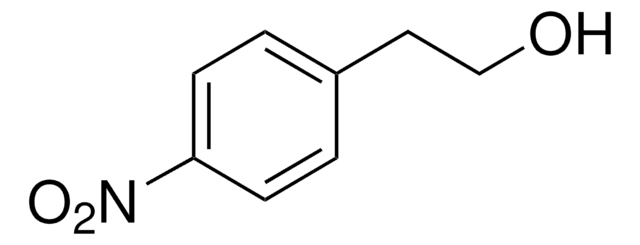A3282
5-Azido-2-nitrobenzoic acid N-hydroxysuccinimide ester
≥95%, powder
Synonym(s):
N-(5-Azido-2-nitrobenzoyloxy)succinimide, N-Succinimidyl 5-azido-2-nitrobenzoate
About This Item
Recommended Products
assay
≥95%
form
powder
reaction suitability
reagent type: cross-linking reagent
color
yellow to yellow-orange
solubility
ethyl acetate: 25 mg/mL
DMF: soluble
functional group
NHS ester
storage temp.
2-8°C
SMILES string
O=C(ON1C(CCC1=O)=O)C2=C(C=CC(N=[N+]=[N-])=C2)[N+]([O-])=O
InChI
1S/C11H7N5O6/c12-14-13-6-1-2-8(16(20)21)7(5-6)11(19)22-15-9(17)3-4-10(15)18/h1-2,5H,3-4H2
InChI key
FUOJEDZPVVDXHI-UHFFFAOYSA-N
Looking for similar products? Visit Product Comparison Guide
Application
Caution
Other Notes
Storage Class
11 - Combustible Solids
wgk_germany
WGK 3
flash_point_f
Not applicable
flash_point_c
Not applicable
ppe
Eyeshields, Gloves, type N95 (US)
Certificates of Analysis (COA)
Search for Certificates of Analysis (COA) by entering the products Lot/Batch Number. Lot and Batch Numbers can be found on a product’s label following the words ‘Lot’ or ‘Batch’.
Already Own This Product?
Find documentation for the products that you have recently purchased in the Document Library.
Our team of scientists has experience in all areas of research including Life Science, Material Science, Chemical Synthesis, Chromatography, Analytical and many others.
Contact Technical Service








